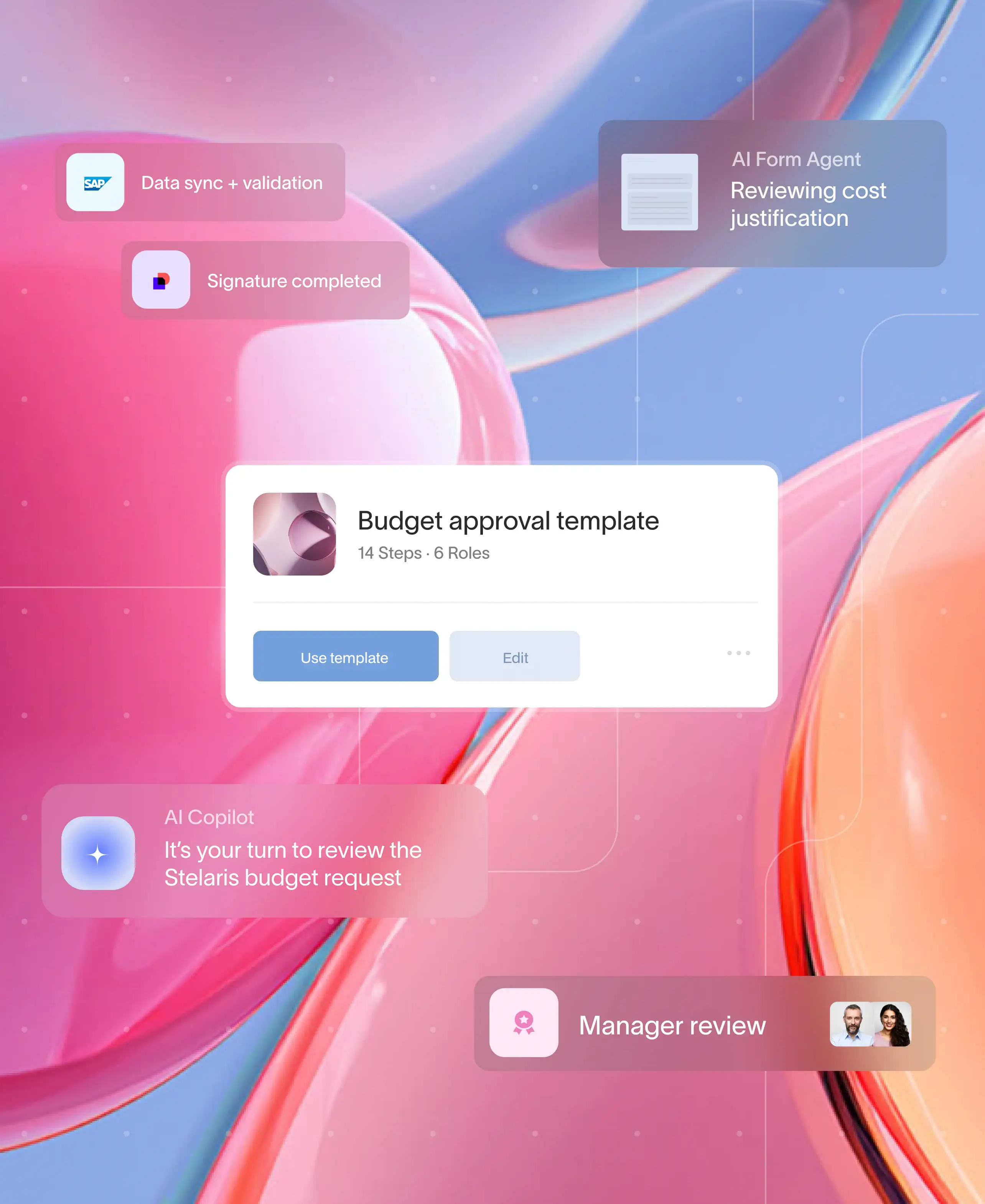
Navigating the customer onboarding process is akin to welcoming a guest into your home. It's your chance to make a remarkable first impression, setting the stage for a fruitful and long-lasting relationship. In modern business landscapes, where customer experience reigns supreme, a robust onboarding strategy is not just a 'nice to have' addition to your business plan—it's a pivotal component of your company's growth and success.
In this blog post, we'll unravel the essence of customer onboarding, punctuated with examples and a practical roadmap for crafting an effective strategy for your business. Whether you're a fledgling startup, a nimble small business, or a well-established SaaS company looking to enhance your client onboarding process, this post is peppered with actionable insights to supercharge your customer onboarding strategy.
Understanding the core of customer onboarding
Before we can create a successful customer onboarding strategy, it's essential to understand what customer onboarding is all about. In its simplest form, customer onboarding is the series of steps that a new user goes through from the time they first encounter your product or service to the point where they become successful, self-sufficient customers. It is the prelude to the user's full adoption of your offering and thus traps potency in establishing loyalty and churn reduction.
The essence of onboarding
An effective customer onboarding process builds bridges between the customer's expectations and your product's delivery. It's not a one-size-fits-all solution. Rather, it's a customized experience that guides customers through their initial interactions with your brand, ensuring they understand the value of your solution and are equipped to use it in their unique context.
Why a top-notch onboarding is imperative
Investing in a robust customer onboarding process yields significant business returns. Effective onboarding:
- Reduces churn: A well-guided start is crucial to prevent customers from slipping through the cracks and churning out.
- Solidifies customer loyalty: When you make users feel valued from the outset, you start building a loyal customer base.
- Accelerates time to value: An optimized onboarding process ensures customers can start deriving value from your product or service swiftly.
- Provides valuable user feedback: It's an opportune time to gather insights on user behavior and get input for potential improvements.
With these compelling reasons in mind, it's evident that customer onboarding is a critical component in your business's user retention and growth strategy.
The customer onboarding process
We now venture into the realm of implementation, breaking down the customer onboarding process into five actionable steps.
Step 1: Define your goals and metrics
Your onboarding strategy should be purposeful and measurable. Begin by clearly defining what success looks like for your onboarding process. Is it a certain level of product knowledge? Engagement with key features? Activation of a particular service? Establish metrics to track user behavior and the effectiveness of your onboarding efforts.
Step 2: Know your audience and their needs
A key principle in customer onboarding is personalization. No two customers are the same, and your onboarding strategy should reflect that. Conduct thorough user research to understand your audience and tailor your onboarding experience to meet their specific needs and pain points.
Step 3: Develop an onboarding plan
Your onboarding plan is a blueprint of the customer's first experience with your brand. This should include the design of the onboarding process, identification of necessary resources (e.g., tutorials, documentation, customer support), and the creation of a cohesive communication strategy that guides users through each step.
Step 4: Implement and test your onboarding process
With your plan in hand, it’s time to put it into action. Use onboarding software to automate and scale the onboarding process as your customer base grows. However, don't forget the human touch—personalized messages or check-ins can go a long way.
Before a full rollout, conduct A/B testing to optimize the onboarding flow and gather feedback from early adopters. Incorporate these insights to refine the process.
Step 5: Evaluate and iterate
Post-launch, regularly review and analyze your onboarding metrics to ensure your strategy is achieving its goals. Be prepared to iterate and evolve your approach based on user feedback and changing market dynamics. It’s an ongoing process that requires agility and a commitment to continuous improvement.
The customer onboarding process should help newly acquired customers become familiar with all of the features and capabilities of your product. It’s a shame to lose a customer because they want a specific feature that your product has but they just didn’t know about it. The flow of your onboarding process is going to depend on two key things: your product and the needs of your customers.
Examples of successful customer onboarding strategies
To bring these concepts to life, it's helpful to explore customer onboarding examples that have resonated with their target audiences. Here are a few case studies of effective customer onboarding strategies across different industries.
SaaS onboarding
Imagine a SaaS platform that uses a combination of welcome emails, in-app tutorials, and one-on-one coaching sessions for high-value customers. This personalized approach ensures users are not overwhelmed by the technology and quickly understand how to use the product in their specific context.
E-commerce onboarding
In the realm of e-commerce, an exemplary onboarding strategy could involve a progressive profile completion process with rewards for each step. This incentivizes customers to provide more information, enabling the company to customize the shopping experience and recommend products that align with their preferences.
Crafting your unique customer onboarding strategy in 5 steps
For businesses with client portals, an effective onboarding strategy might include a detailed welcome packet that clearly outlines the benefits of using the portal and includes step-by-step instructions for common tasks. This approach ensures clients feel confident using the portal right from the start and see the value it adds to their experience with your business.
With strategy examples in hand, it's time to create your own onboarding master plan. Here are five essential steps to get you started on this dynamic and strategic process.
Step 1: Customer journey mapping
Map out the various touchpoints a customer has with your brand, from the first web search to becoming a loyal user. Identify critical steps where onboarding can influence their experience.
Step 2: Personalization
Leverage user data and personas to create a customized onboarding experience. The more tailored the approach, the more successful the onboarding process is likely to be.
Step 3: Content creation
Develop high-quality onboarding content that educates and engages users. This can be in the form of how-to guides, video tutorials, interactive walkthroughs, or live demonstrations.
Step 4: Engagement practices
Design communication channels and strategies that resonate with your audience. Consider using email, in-app messages, or even direct outreach to maintain engagement throughout the onboarding process.
Step 5: Measure and optimize
Set up robust analytics to track user behavior during onboarding. Use this data to refine the process and anticipate areas where users might need additional support.
Streamline client onboarding with a customer portal
Customer onboarding is an intently designed art of introducing a user to the world of your product or service. It's a culmination of personalization, education, and guidance that not only familiarizes users with your offering but also makes them feel valued and understood. In crafting a customer onboarding strategy, it's crucial to be iterative, data-driven, and most importantly, empathetic toward the end user. By following the outlined steps, you can create an onboarding process that's not only efficient but also delights your customers and sets the stage for a lasting relationship.
Moxo's client portal propels the company to the forefront of the digital portal sector with its cutting-edge solutions designed specifically for B2B interactions. Our approach emphasizes customization, automation, integration, and security, streamlining and enhancing business collaborations. Connect with Moxo to learn how we can dramatically improve your client onboarding strategy and optimize processes for your business's growth and success.





